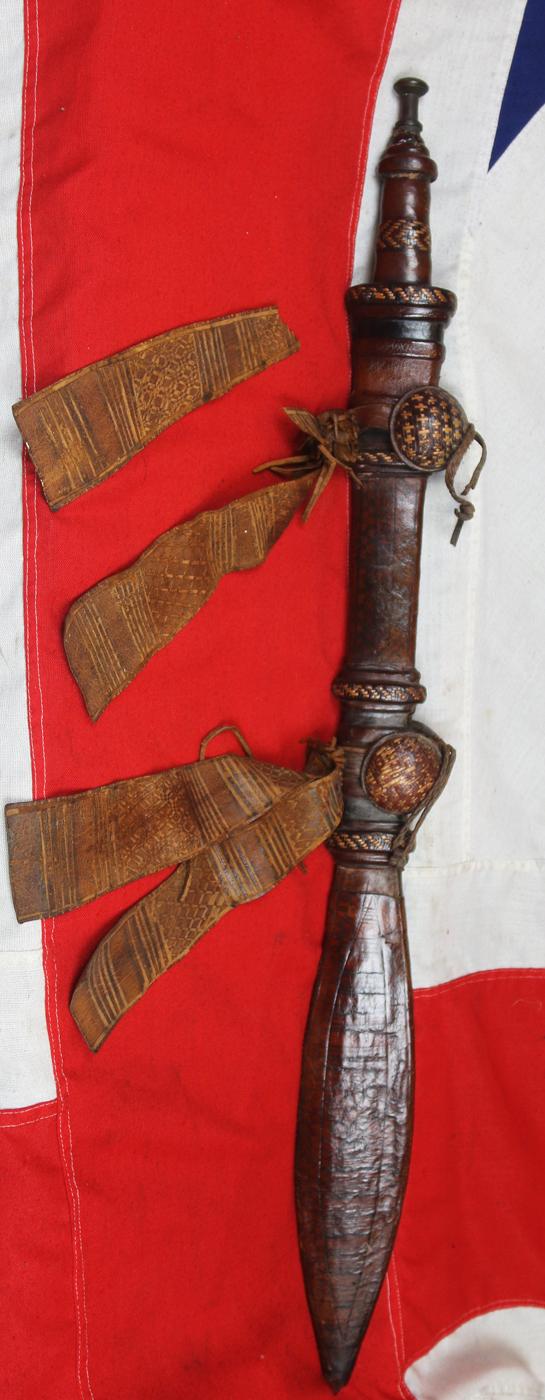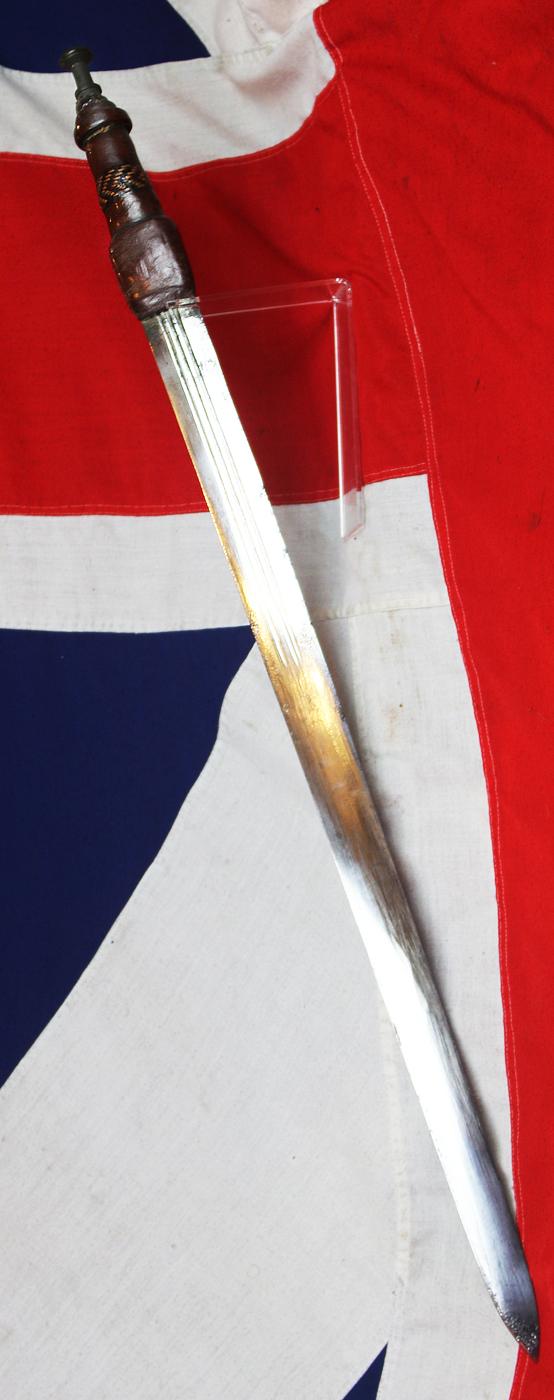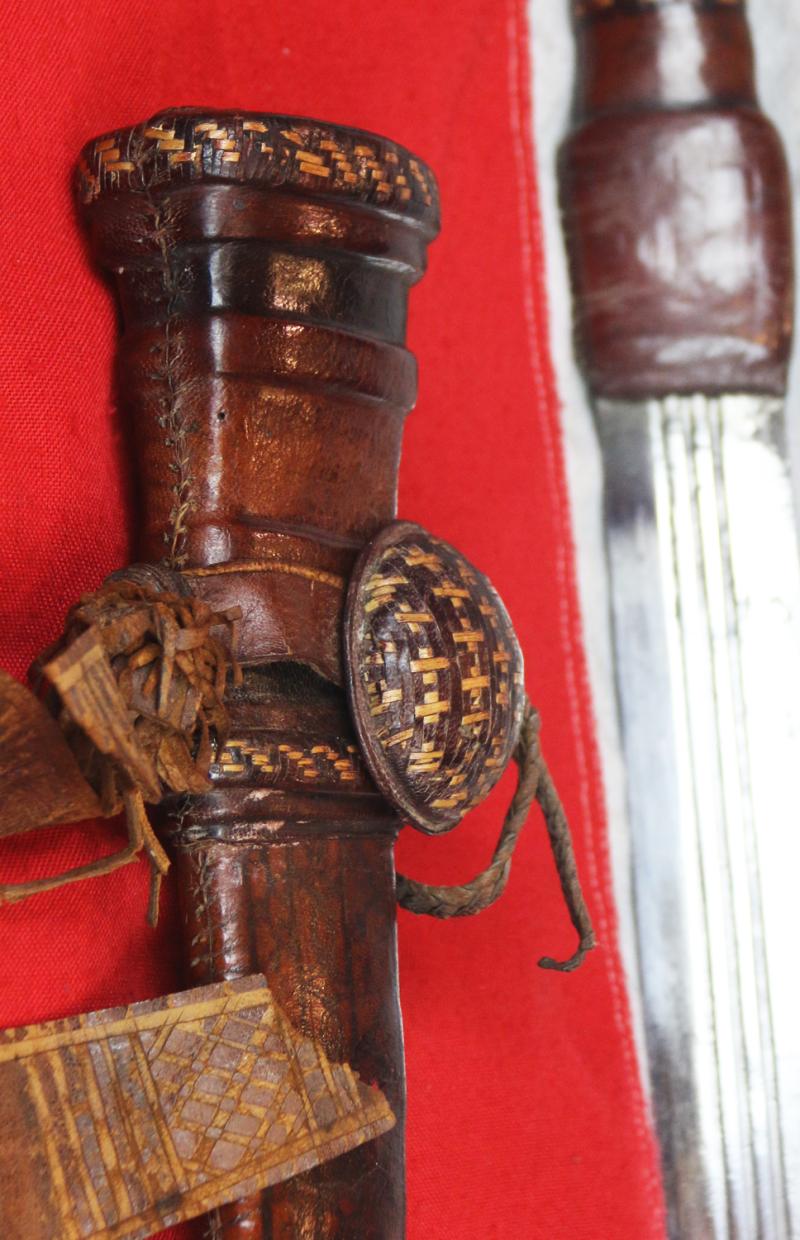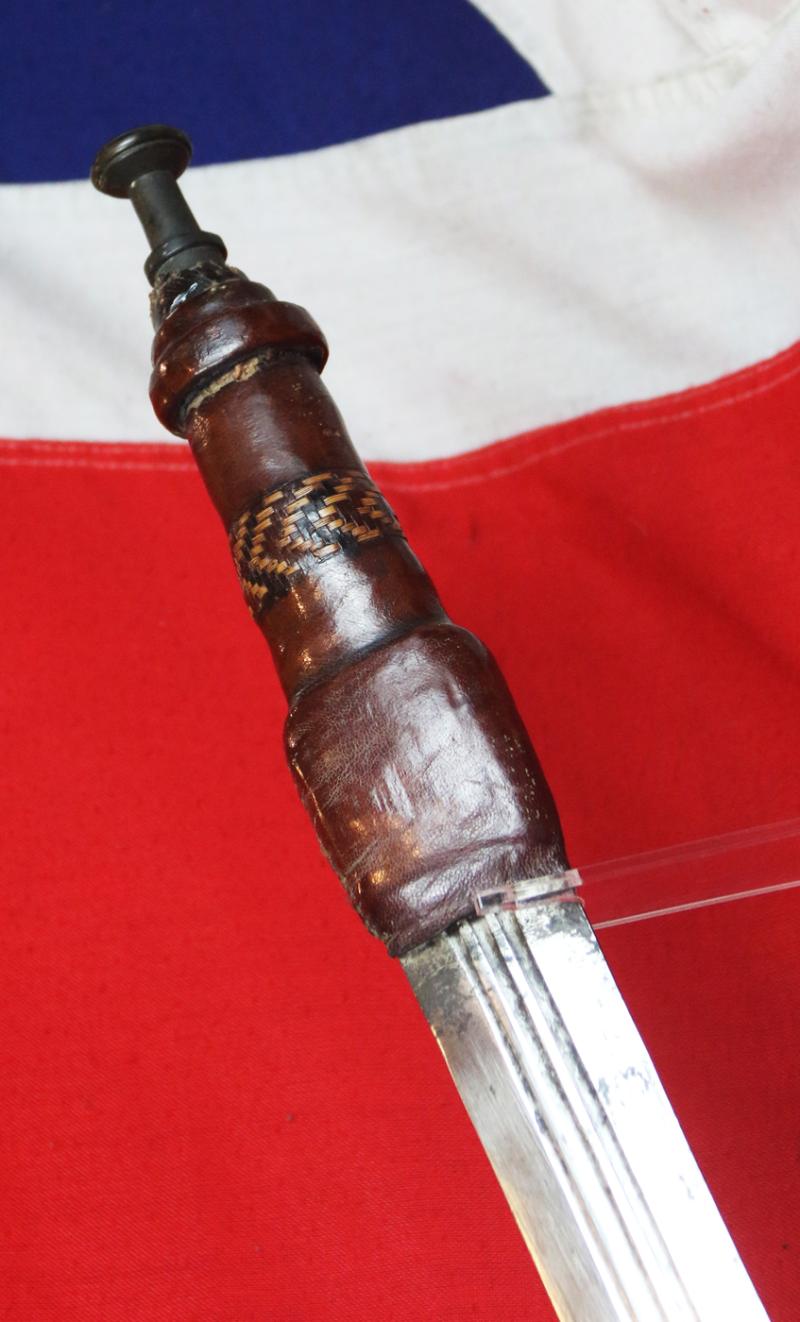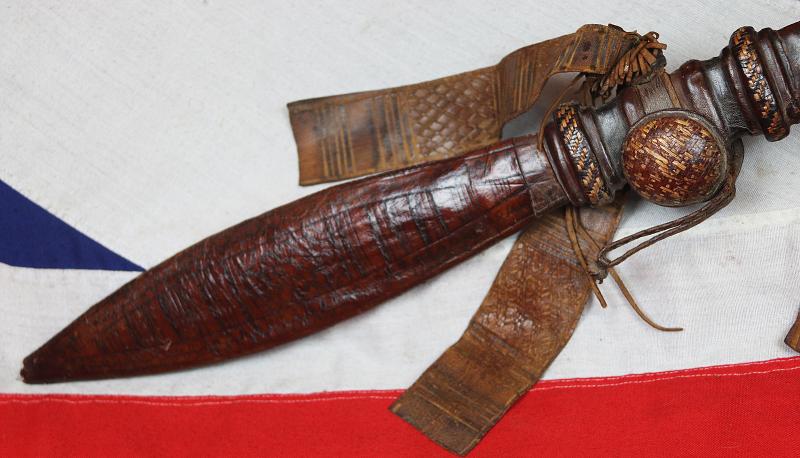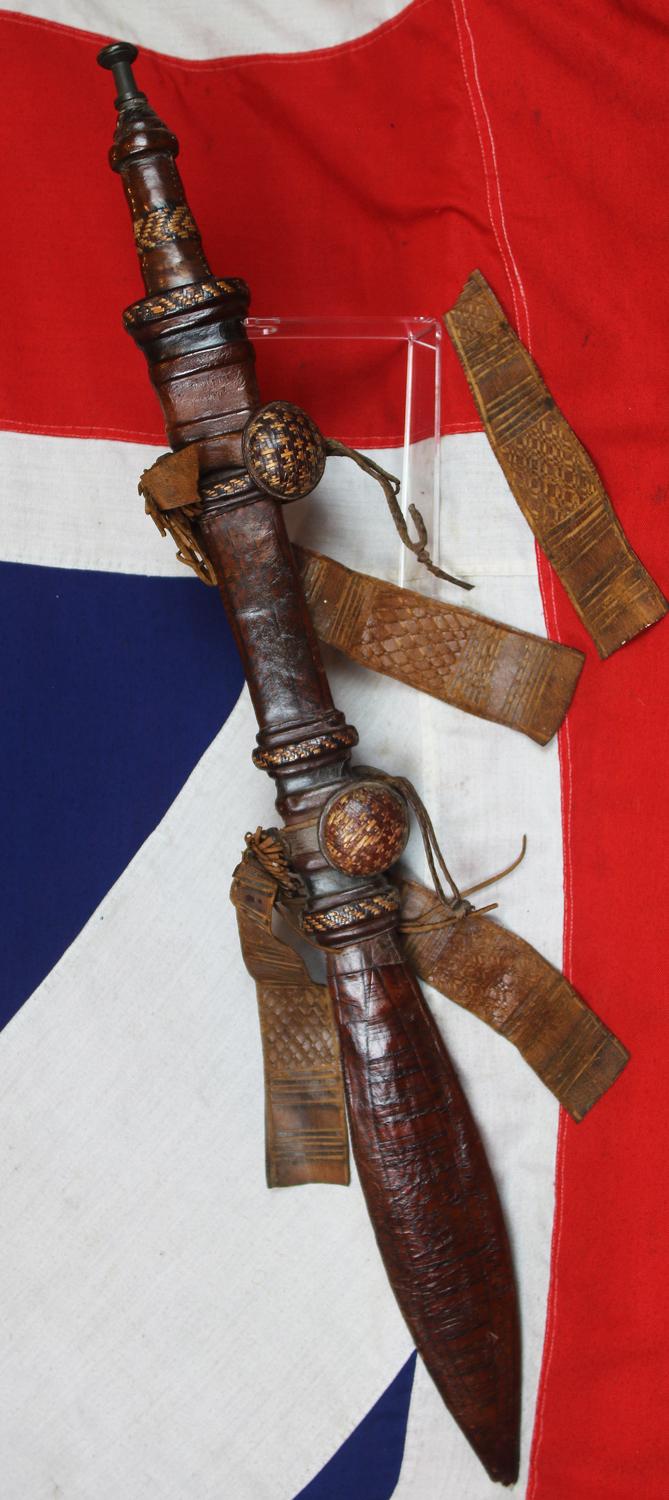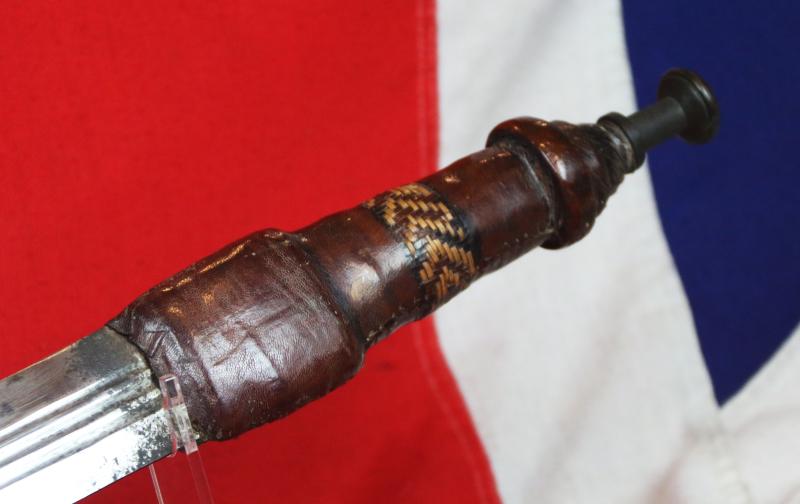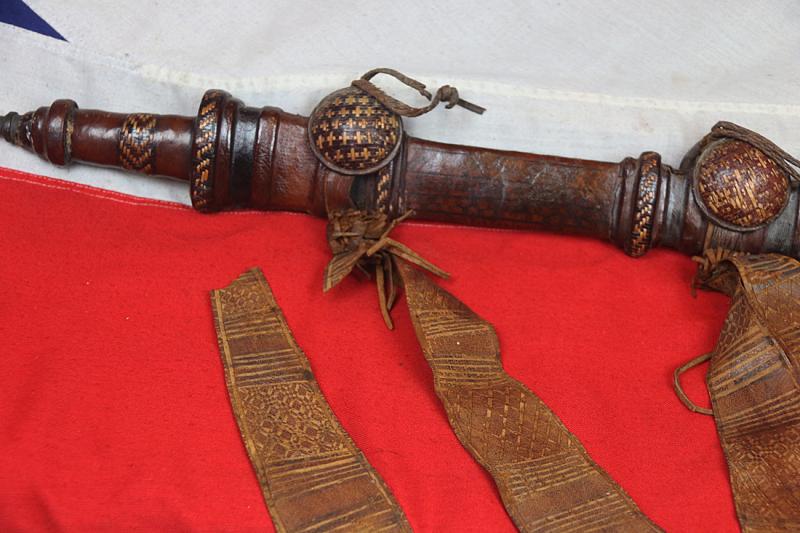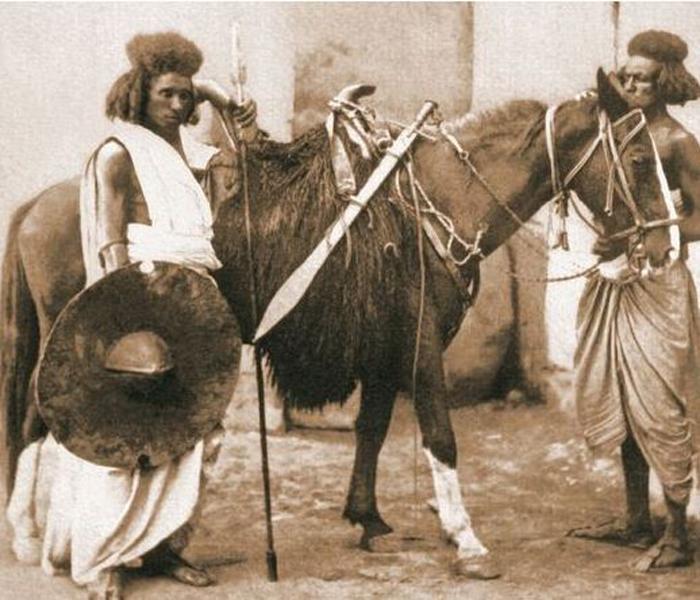A Long Sword of the Mandinka Warrior, West African, with Elaborate Decorative Fittings
Very long fluted broadsword blade with baluster hilt, with contrast stitching and leather-covered handle. Geometrically patterned leather scabbard with traditional banding patterns, stitched raffia decorations and braided suspension cords and leather fringe tassels. One leather strap separated but can be re-affixed.
Just returned from three days of considerable hand polishing and conservation, throughout the sword and scabbard, in our workshop.
In some areas they are referred to locally as termed a 'kota' and that the scabbard was termed 'holga' ( house 'for the sword')
The Mandinka are the descendants of the Mali Empire, which rose to power in the 13th century under the rule of king Sundiata Keita, who founded an empire that would go on to span a large part of West Africa. They migrated west from the Niger River in search of better agricultural lands and more opportunities for conquest. Nowadays, the Mandinka inhabit the West Sudanian savanna region extending from The Gambia and the Casamance region in Senegal to Ivory Coast. Although widespread, the Mandinka constitute the largest ethnic group only in the countries of Mali, Guinea and The Gambia. Most Mandinka live in family-related compounds in traditional rural villages. Their traditional society has featured socially stratified castes.Mandinka communities have been fairly autonomous and self-ruled, being led by a chief and group of elders. Mandinka has been an oral society, where mythologies, history and knowledge are verbally transmitted from one generation to the next. Their music and literary traditions are preserved by a caste of griots, known locally as jelis, as well as guilds and brotherhoods like the donso (hunters).
Between the 16th and 19th centuries, many Muslim and non-Muslim Mandinka people, along with numerous other African ethnic groups, were captured, enslaved and shipped to the Americas. They intermixed with slaves and workers of other ethnicities, creating a Creole culture. The Mandinka people significantly influenced the African heritage of descended peoples now found in Brazil, the Southern United States and, to a lesser extent, the Caribbean.
This high-status sword from The Gambia demonstrates the widespread African practice of importing European sword blades and supplying them with a hilt and scabbard of local style. The blades of such Mandinka dress swords are usually reflecting the economic networks of European colonial influence. These swords were the exclusive prerogative of Mandinka men of importance or social standing and were intended to enhance their impressive and martial appearance.
The most significant artistic feature of the sword is the very high quality of dyed and woven leatherwork to be seen on the scabbard and baldrics (wearing straps). The result is particularly striking, and represents a strong culture of dyed, tooled and plaited leatherwork in much of West Africa. The geometric pattern of woven fibre is especially representative of decorative material culture in this region.
The flaring leaf-shaped lower portion of the scabbard is said to represent the head of a crocodile and can also seen on the scabbard of the straight kaskara sword of the Eastern Sudan, on the opposite side of the continent's Sudanic belt. Some scholars think the most plausible explanation for the unusual scabbard form appearing in two places over 3000 miles apart is that it was carried westward across the Sudan by successive waves of Islamic warriors over the last one thousand years.
Photos in the gallery of 19th century Sudanese warriors but carrying very similar swords with cruciform broadsword blades like this one and the paddle ended scabbards
Reference *Special Conservation* Item, see info page.
Code: 24679

